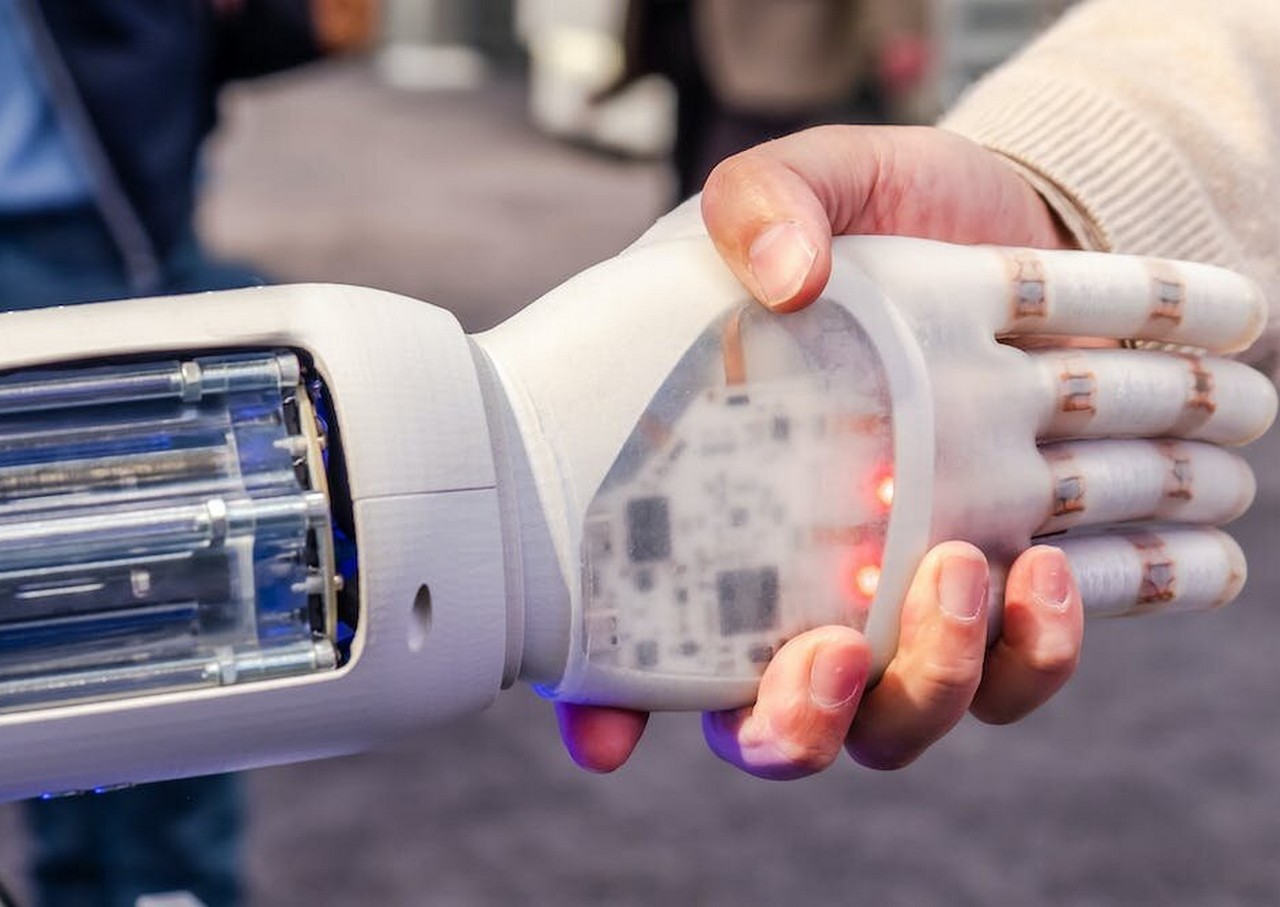It is practically a decade because the time period “fourth industrial revolution” was coined, but many individuals will not have heard of it, or know what it refers to.
Also called trade 4.0, it is a method of describing how connecting collectively completely different superior applied sciences may remodel how we make issues. An instance of this could possibly be placing synthetic intelligence (AI) into manufacturing facility robots.
Though there is not any formal settlement we live via this new age, it is a signal of the significance with which many individuals regard these developments and their potential. The earlier industrial revolutions have been: the rise of steam energy within the late 18th century, the usage of electrical energy to energy machines on the finish of the nineteenth century and the shift to digital electronics that began within the Seventies.
These have been outlined by clear milestones. However many rising applied sciences may declare to be a part of trade 4.0. These embrace digital actuality (VR) to simulate what is going on on in an meeting line, and 3D printing. There are additionally lesser identified developments comparable to digital twins—digital fashions that precisely replicate the conduct of bodily objects comparable to wind generators or plane engines.
Any expertise that’s “sensible” or “cyber-physical”—the place the strains between the digital and bodily worlds are blurred—can declare to be a part of the fourth industrial revolution.
However many firms seem to have been sluggish to benefit from these developments. Right here, we’ll present why that could possibly be and the modifications which may be needed to make sure that transformative applied sciences stay as much as their potential.
A stalled revolution?
A provide chain describes the complete system for producing a product, from uncooked supplies to delivering the completed article to a client. So it is helpful to take a look at the impression trade 4.0 applied sciences have had on these chains.
It is troublesome to measure how a lot of an impact particular applied sciences could be having on the economic system. Nevertheless, one factor we are able to do is see what impression they’ve made on choice makers in firms.
One in every of us (Ralf Seifert) just lately printed a survey of a number of hundred senior executives carried out. The survey requested the executives their views on managing provide chains.
Not one of the prime priorities listed by the executives relate to trade 4.0. Headline-grabbing applied sciences strongly related to the fourth industrial revolution, comparable to AI and machine studying, the web of issues, robotics and 3D printing are within the backside third of priorities.
A have a look at on-line tendencies additionally reveals that searches for “trade 4.0” peaked in 2019, however have since dropped to a considerably decrease degree.
There could possibly be plenty of potential causes for this disappointing embrace of trade 4.0 by firms. In 2020, a survey by the accounting big KPMG confirmed that, of all trade 4.0 applied sciences, solely cloud computing had reached a complicated—although nonetheless incomplete—degree of implementation.
For a lot of companies, the advantages of different essential applied sciences stay obscure. The day by day pressures of service and price take precedent, so it takes effort to maneuver away from acquainted options. That is in line with the dip in searches for trade 4.0—whilst international provide chains have been disrupted by the coronavirus pandemic, the blockage of the Suez Canal delivery lane in 2021, floods hampering rail transport and a scarcity of delivery containers.
The KPMG report from 2020 discovered that lower than half of enterprise leaders had an excellent understanding of the time period “fourth industrial revolution.”
Excessive threat, excessive scrutiny
A ignorance is one hurdle for the adoption of trade 4.0 applied sciences. One other is the necessity to construct the enterprise case for expenditure on new technological options.
The extra formidable the expertise, the upper the danger and scrutiny. Not each firm has leaders able to champion and sponsor innovation within the face of unsure or much less tangible outcomes.
Business 4.0 initiatives can even result in resistance to vary amongst staff. IT departments, skilled for years to hunt out giant enterprise resolution suppliers, hesitate to suggest area of interest options from small firms—particularly for applied sciences they are not acquainted with.
One approach to deal with that is to commit assets to constructing separate groups tasked with figuring out and prioritizing trade 4.0 capabilities. Even then, nevertheless, there have to be an alignment with the broader enterprise methods of an organization.
From disaster to alternative
The unprecedented provide chain disruptions during the last two years have pushed executives to contemplate reconfiguring their provide chains. As a rule, nevertheless, they’re opting to do that in a traditional method.
Reshoring (returning manufacturing to the corporate’s authentic nation) and nearshoring (transferring manufacturing to a closer-by, relatively than extra distant, nation) have turn out to be well-liked choices for firms seeking to construct the resilience of their provide chains.
Business 4.0 applied sciences have a task to play on this transition. For instance, the rethinking of worldwide provide chains took place via a necessity to scale back labor prices.
Driverless forklifts, or automated guided automobiles (AGVs), are one instance of the way in which robotics can mitigate rising prices elsewhere. Additive manufacturing—the commercial title for 3D printing—can simplify and cut back the price of manufacturing processes that contain two or extra pricey steps.
For provide chains that cross worldwide borders, there shall be an added incentive to make use of digital platforms for bettering the power to trace stock—a time period protecting every part from uncooked supplies to completed merchandise—and to assist transport items. This may assist firms determine unplanned disruptions extra shortly and react to them appropriately.
The very provide chain dysfunctions that made headlines and arguably slowed the short-term progress of trade 4.0 might but show to be the engine that lastly delivers its promise.
Supplied by
The Dialog







